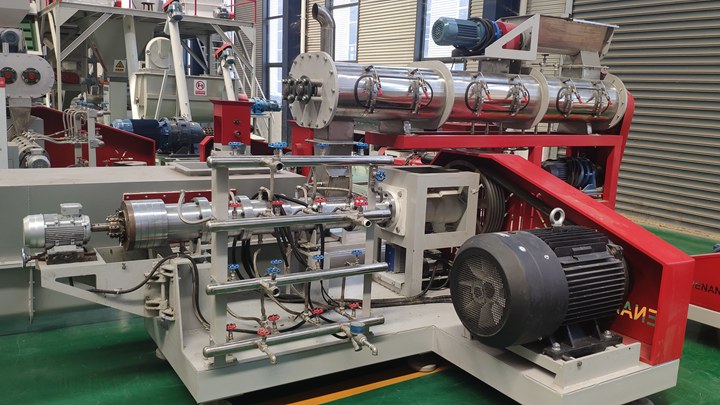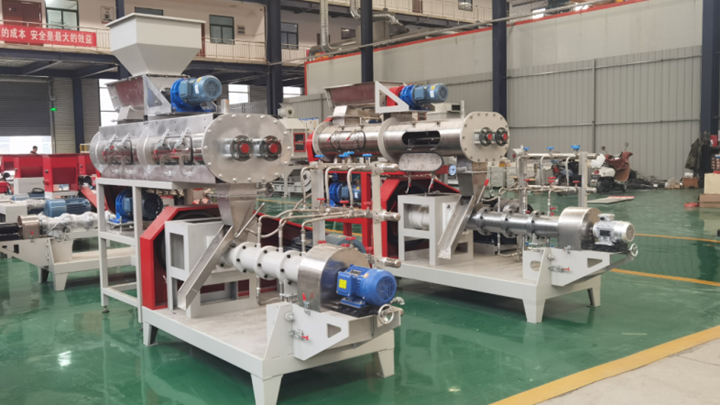Tilapia feed production line for commercial use in Uganda
-

Tilapia Production in Uganda - Markets, Suppliers and Exporters
Uganda tilapia export quantities. In 2019 Uganda exported 650 tonnes of tilapia. For the year 2019 alone, the demand for Uganda tilapia (fish category) has gone down, recording a change of -10.591 pc compared to the year 2018. Between 2017 and 2019, tilapia's exports decreased by -14.59 percent bringing the nation US$1.68m for the year 2019.
Get Price -
.jpg)
Ugandan Fish Farmer Produces Fresh Tilapia & Encourages Small
May 12, 2021 · Uganda is an agriculture-based country where more than 70% of its people work in agriculture, many are often referred to as small holders. Their farms are typically very small, usually less than one hectare (2.471 acres or 2-3 football fields) and they grow food to feed their family and try to grow enough to sell too.
Get Price -
.jpg)
Novel feed ramps up tilapia farmers' profits - The Fish Site
Jul 01, 2022 · The feed is also cheaper – costing about P28 per kilogram to produce, while the average cost of a commercial feed is about P34 to 36 per kilogram. “We came up with this feed formulation to lower the price of feeds, which account for more than 50 to 60 percent of the total production cost in aquaculture,” said Dr Roger Edward Mamauag, head
Get Price -
.jpg)
Trophic Fish Feed Pellets helping Uganda Fishery Development
At the beginning, they did not have the technology and the infrastructure to start their own business, so they supplemented the training with reading books on aquaculture, ask the professional fish farmer for help online, and purchase a whole set of fish feed production line from Fanway Fish Feed Machinery. They begun producing fish fingerings, and now they have about 40 fish ponds with the capacity to produce 500,000 catfish fingerings and 250,000 tilapia fingerlings per month.
Get Price -
.jpg)
Tilapia Farming For Commercial Purposes - Profitable
May 05, 2021 · For better production, divide the container because more fish will be stored. So for commercial cultivation, farmers are advised to secure the fastest growing tilapia. Start with four ponds to have constant and uninterrupted production which will steer profits approximately every month. How To Raise Tilapia. A pond should be at least 20 by 40 metres depending on the number of fingerlings you want to start with, but for the standard size is 800 square metres with a depth of 1.2 metres.
Get Price -
.jpg)
Qualified Fish Feed Extruders and Feed Production Line by
4. Pomace feed and Cereal feed Pomace feed can be treated as Tilapia feed. Cereal feed refers to malt, rice sprout as feed. 5. Animal feed Animal feed are mainly used as the raw materials of compound feed, not appropriate to use them alone as feed. These animal feed including fish meal, blood meal, meat and bone meal, are generally featured
Get Price -
.jpg)
catfish and tilapia feed processing line
Pet Food / Fish Feed Production Line endues pet food with the amount of nutrition, digestible structure, novel shape, and unique taste to meet with the needs of modern market. catfish and tilapia feed processing line is extruded into a variety of shapes such as granule or power, and can be floating or sink in water.
Get Price -

Tilapia Fish Feed Pellets Formulation Fish Feed Pellet Machine
Sep 24, 2019 · Fish feed preparation on small-scale farms is labor-intensive, and the lack of amino acids in some components can affect feed quality. Commercial tilapia feed preparation, cooking, extrusion and pellet feed usually contain 32 to 40 percent protein. This could be fish meal or soy-based protein, the former more palatable to tilapia.
Get Price -
.jpg)
Tilapia Feed Production Technology to Extrude Supplemental
Some Common Ingredients Used to Produce Quality Tilapia Feed Pellets. The proper extrusion of the raw material and the balanced formulation of nutrients improve the tilapia production till harvesting. High growth rate and low feed conversions improve the economical/financial results of the fish farmers. soybean meal; corn gluten meal ( 60%
Get Price -
.jpg)
Farmed tilapia production in Uganda | Download Scientific Diagram
Besides, it appears that the technologies have improved sufficiently (e.g. extrusion technology in feed production, cooling facilities and effective fingerlings production) (El-Sayed, 2007;Soliman
Get Price -

(PDF) On-farm feeding and feed management in tilapia
Based on this field survey, it is obvious that the majority of tilapia farmers use commercial extruded feeds. Even small-scale farmers use these feeds, together with supplementary feed inputs and/or farm-made feeds. Self-sufficiency in tilapia feed production is therefore crucial for the local tilapia farming industry.
Get Price -
.jpg)
Tilapia farming guide - Understanding the five needs of tilapia
Tilapia don't ask for much. In fact they only have five basic needs: clean water, oxygen, food, light and room to swim. Give your tilapia these things and they will stay healthy and grow fast. The art of tilapia farming is to understand each of these needs and then find a way to provide them in sufficient quantities.
Get Price -

Tilapia feed pellets making solution - Fish Feed Machinery
The tilapias of North Africa are the most important commercial cichlids. Fast-growing, tolerant of stocking density, and adaptable, tilapia species have been introduced and farmed extensively in many parts of Asia and are increasingly common aquaculture targets elsewhere.
Get Price -
.jpg)
The global status of tilapia production and marketing under
Jun 27, 2022 · 2020 is likely to experience the first year-on-year decline in global tilapia production on record. As the US and EU shut down food service and restaurant sales in March and April, purchases and imports of frozen tilapia products began to shrink. Sales of frozen tilapia from China to the US were already substantially (30-40 percent) depressed
Get Price -
.jpg)
New Technologies for Tilapia production | Tilapia Market
You can achieve a production within 20 to 50 tons / hectare / year. Intensive tilapia farming. In this technique, the production system is made in small tanks of 500 to 1000m 3 with a constant water exchange (250 to 600 liters / second) and densities of between 80-150 fish /m 3, ie 200 to 400 tons/m 2 /year . The production of fish will depend
Get Price